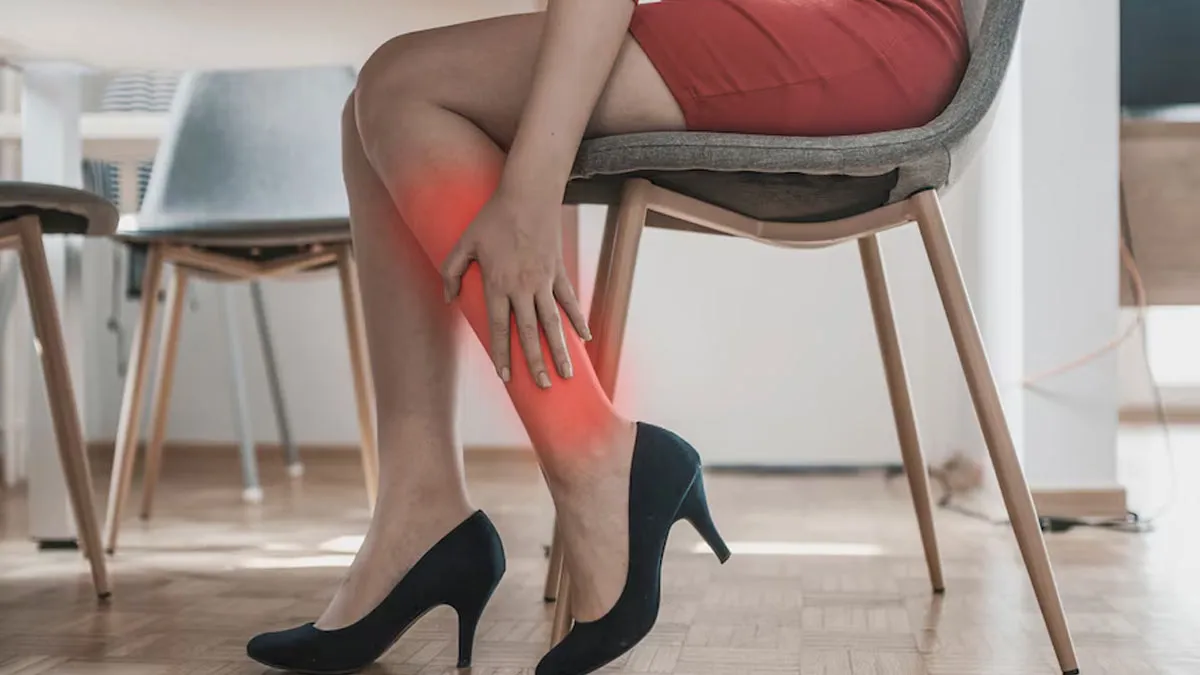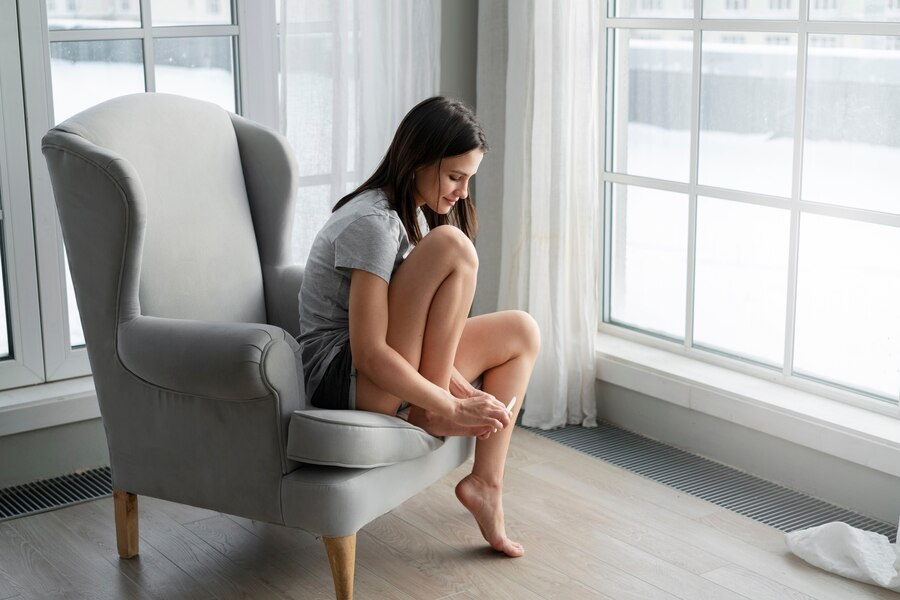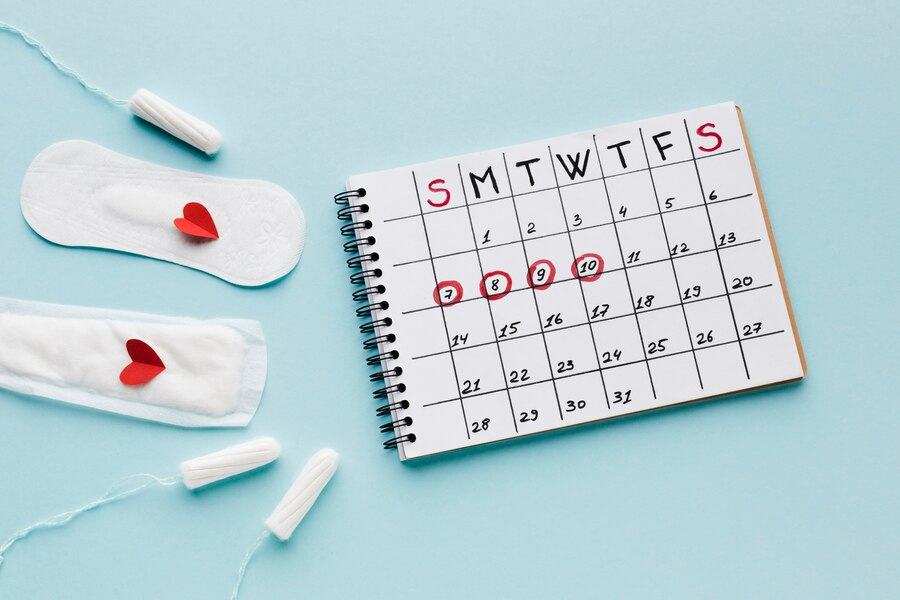
Menstruation is among the most natural processes in the body that, in a way, can tell you a lot about your health, mood, and even your pregnancy status. It occurs when the lining of the uterus breaks down and bleeds because an egg is not fertilised, hence suggesting that you didn't get pregnant. While there are perks to having a normal menstrual cycle, which lasts between 21 and 35 days, some unusual symptoms that accompany it can be concerning and distressful. One of them is leg cramps, which may not occur in everyone, but when they do, one should understand the causes and ways to tackle the pain.
Table of Content:-
Also Read: Managing Menstrual Pain: Here's How Tomatoes Can Help In Reducing The Pain
What Causes Leg Cramps During Periods?

“Leg cramps during periods are a regular occurrence for many women,” says Dr Archana Dhawan Bajaj, Gynaecologist, Obstetrician, and IVF Expert, Nurture IVF Clinic, New Delhi, explaining that the hormonal changes throughout the menstrual cycle might cause modest leg pain or discomfort.
According to her, period-related discomfort can begin up to two weeks before the menstrual cycle and last throughout the period, called the luteal phase. The body manufactures prostaglandins, substances that assist the uterus in contracting and evacuating the uterine lining. These contractions can cause discomfort or cramping in the surrounding blood vessels, nerves, and muscles, particularly those in the legs.
Furthermore, hormonal changes during periods might impair blood circulation, causing heaviness or soreness in the legs. Hormonal variations can also induce water retention, muscular swelling, and internal discomfort, particularly in the legs and thighs.
Finally, various lifestyle variables might aggravate the sense of heavy legs and leg discomfort caused by periods. This is due to a lack of activity, a bad diet, inadequate water, or even stress.
However, if your leg discomfort becomes intolerable and persists even after your period, it may indicate an underlying health problem, the doctor adds.
Why Lifestyle Choices Matter

Lifestyle factors play a significant role in the severity and occurrence of menstrual cramps (dysmenorrhea). According to a study published in the journal Electronic Physician, poor eating habits, low physical activity, high stress levels, and weak social connections are linked to increased menstrual pain. Studies show that young women with healthier lifestyles, including regular exercise and strong social relationships, experience fewer and less severe cramps. Conversely, factors like inadequate physical activity and elevated stress exacerbate symptoms.
Dr Bajaj adds that women who exercise on a daily basis are less likely to have menstruation discomfort, cramps, or mood swings, as reported in studies. "We don't know why exercise is good for Premenstrual Syndrome (PMS), but studies show that it can release 'happy' chemicals like serotonin and endorphins, which could explain the advantage."
A healthy diet includes plenty of vegetables, fruits, nuts, seeds, fish, and omega-3-rich foods like flax or chia seeds, as well as proteins like lentils and eggs and whole grains like rice, wholemeal pasta, millet, or amaranth.
Lean meat is an excellent source of iron and protein, particularly for women who experience heavy periods.
Also Read: Why Does Your Lower Back Hurt During Periods? Doctor Shares Tips For Relief
How To Manage Leg Cramps During Menstruation And When To Consult A Doctor

Some effective and safe ways to manage leg cramps during menstruation include:
- Applying heat to your legs using a heating pad, hot water bottle, heat patch, or warm compress can provide much-needed pain relief.
- Massage your legs with a muscle-relaxing essential oil, such as lavender oil, for immediate relief from period discomfort. Mild stretching activities and leisurely walks during menstruation can help improve blood circulation in the legs and alleviate discomfort.
- While alcoholic and caffeinated beverages should be avoided during periods, herbal teas like ginger-turmeric tea can be quite beneficial. Ginger and turmeric have anti-inflammatory, healing, and pain-relieving qualities.
- If you get leg cramps during your period, drink plenty of water. This can help you maintain your body's fluid balance and avoid leg cramps.
For women who suffer from leg cramps during their period, it is advisable to see a doctor if:
- Over-the-Counter (OTC) painkillers and self-care techniques are ineffective, and the pain interferes with your life.
- Your cramps suddenly become worse.
- You are over 25 and have terrible cramps for the first time.
- You have a fever and period discomfort.
- You feel discomfort even when you don't have your period.
Conclusion
Leg cramps during menstruation can be a frustrating and painful experience, but understanding the underlying causes and following healthy lifestyle habits can help manage the discomfort effectively. By staying active, maintaining a balanced diet, managing stress, and incorporating self-care techniques, women can reduce the severity of leg cramps. However, persistent or severe pain should not be ignored, as it could indicate an underlying health issue that requires medical attention. Consult a healthcare provider to help navigate menstrual challenges with ease.
Also watch this video
How we keep this article up to date:
We work with experts and keep a close eye on the latest in health and wellness. Whenever there is a new research or helpful information, we update our articles with accurate and useful advice.
Current Version